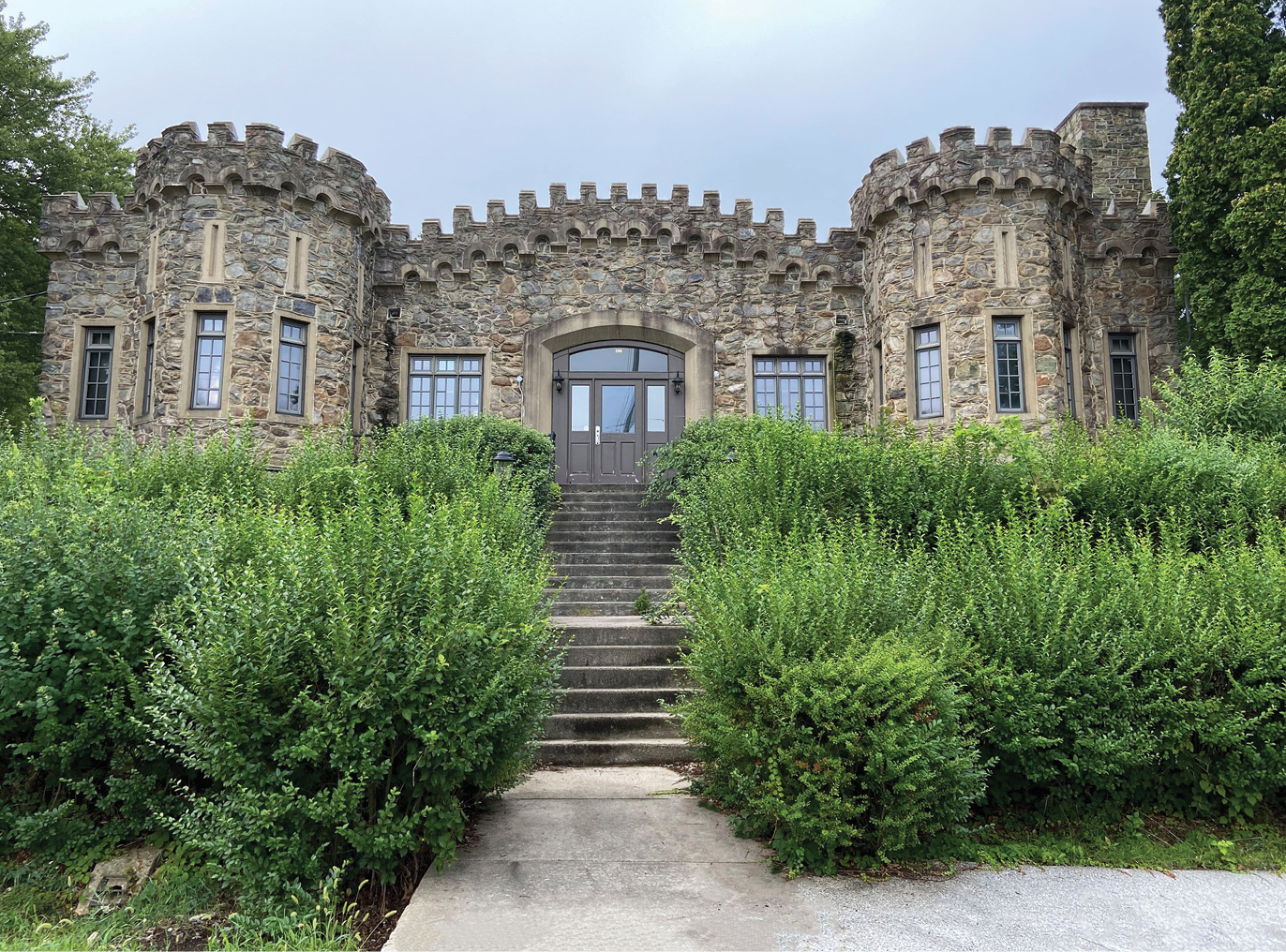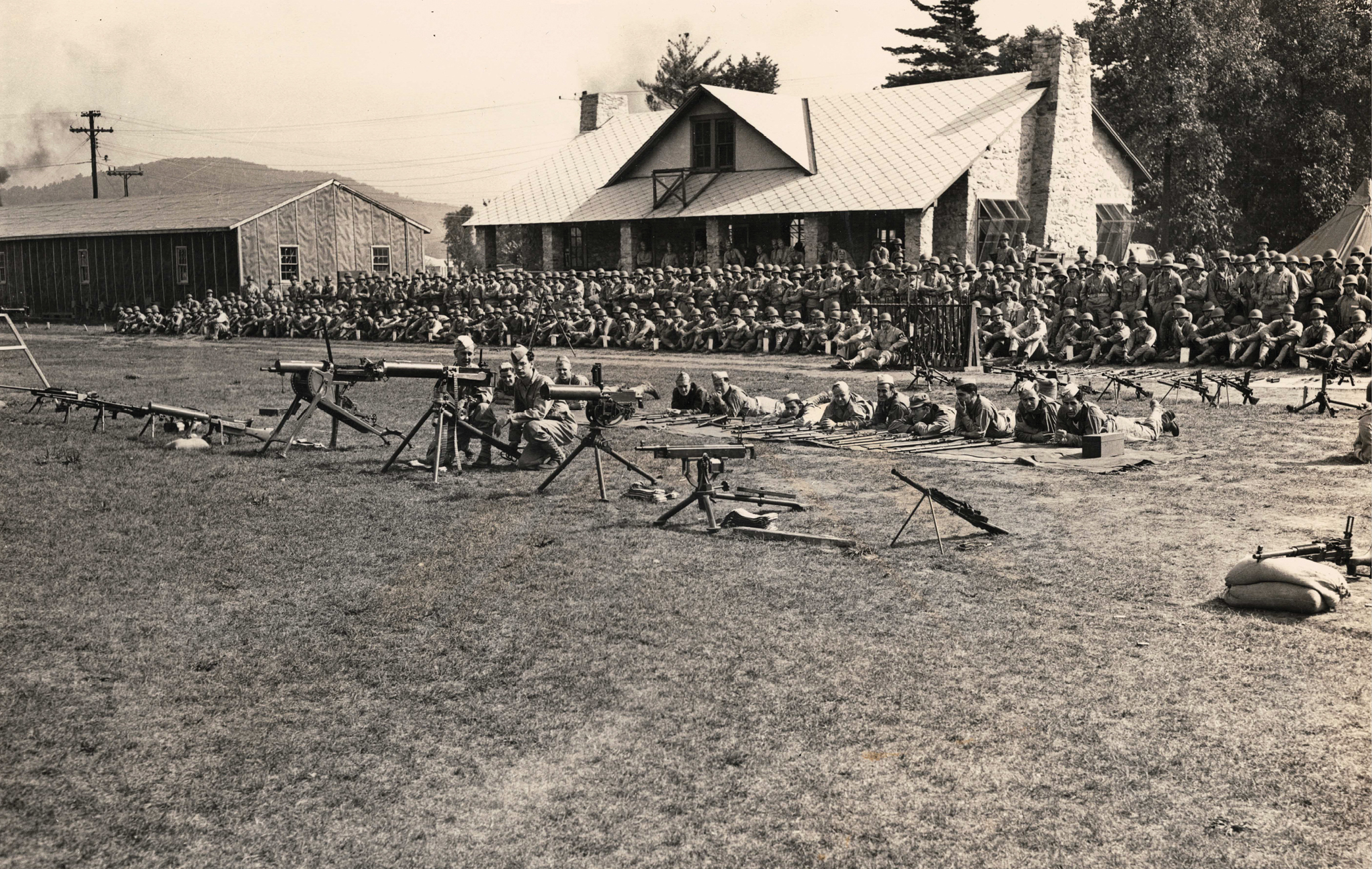For all the many hassles that it took to close the deal, developer John Krumpotich of Cascade, Maryland, acknowledges that getting 500 acres of developed — if needy — property at the foot of the Blue Ridge Mountains was “a pretty good deal” at $1.8 million. But through his purchase of the U.S. Army’s abandoned Fort Ritchie, Krumpotich also acquired an astonishing piece of American history.
At least partly because of a legacy shrouded in wartime secrecy, the story was largely untold before the airing last year of a lengthy documentary by the CBS News show “60 Minutes.” Narrated by reporter Jon Wertheim, the program shed light on Fort Ritchie’s role as a World War II-era training ground for an unconventional corps of U.S. Army intelligence operatives. There, in remote western Maryland, the Army honed a brainy and agile team of spies that would play a pivotal role in the Allies’ victory in Europe.
What makes the story truly singular is that, according to historian Landon Grove, close to half of the “Ritchie Boys,” as they would come to be known, were recent immigrants. Among them, says Grove, were nearly 3,000 Jews who had escaped the Holocaust.
“At first,” Grove tells Site Selection, “the Army was kind of hesitant about these guys because they were immigrants from other countries. And then they realized that, while you can teach someone how to fire a rifle in a few weeks, you can’t teach someone fluent German that fast.”
Fortified by their crash course in intelligence, teams of Ritchie Boys landed on the shores of Normandy on D-Day and went straight to the front. As native German speakers possessed of pained familiarity with the enemy and knowledge of the terrain, their skills as interrogators and analysts of battlefield intelligence were unrivalled and their exploits legendary. One told “60 Minutes” of masquerading as a fearsome Russian kommissar to persuade reluctant German prisoners to talk.
“An Army report came out after World War II,” says Grove, “that estimated that the guys who trained at Fort Ritchie were responsible for obtaining about 60% of all the actionable intelligence in Europe. That’s pretty remarkable.”
Slow Decay, Speedy Rebound
What became of Fort Ritchie was far less noble. In the decades that followed the war, the secluded mountain outpost dotted with dozens of elegant, stone buildings and lodges would come to support sundry military missions, only to fall in 1998 to the Pentagon’s Base Realignment and Closure Program (BRAC), the budget-cutting regime that has served to shutter hundreds of former military installations since the late 1980s. At the time of its closing, Fort Ritchie was the area’s top employer.
“When the Army left town,” says Grove, “you can imagine what that did to the economy around here.”
Home prices slowly collapsed. Vandals pounced on Fort Ritchie. The base’s stately infrastructure decayed. Mangled in red tape, a succession of redevelopment efforts that went collectively nowhere served to quash hopes that something worthy might become of the storied property.
Enter John Krumpotich, the force behind the development company, Cascade Properties. The local financial planner who found a way to wrest control of Fort Ritchie has managed to bring the post back to life.
“I’ve always been interested in real estate, and I’ve always been interested in history,” Krumpotich tells Site Selection. “My wife and I both thought, ‘Hey, we’ve got the skillsets to bring this back.’ So we approached the county and started a sales process.”
Fort Ritchie, he says, “was just a mismatch of government control for a long time. It needed a group or somebody who’s going to take the bull by the horns and place it back on its feet. This group,” he says, “is hell-bent on making it happen.”
His vision of a thriving mixed-use community that can elevate surrounding Washington County has evolved — in less than two years — to include 58 restored and fully occupied townhomes, two manufacturing businesses (HVAC specialist JRJ Manufacturing and aluminum auto parts maker Harshman Automotive), a primary care facility, a community center and a booked-out wedding and events hall. Also, an ice cream shop. Against seemingly long odds, Fort Ritchie has fast become the place for summer picnics, fall festivals and farmers markets.
“It’s become this grassroots movement,” says Grove, who is connected to the project, “that has really energized a community that hasn’t really seen much movement since the late ’90s.”

Ritchie Castle is among dozens of architecturally significant buildings.
Courtesy of Emily Muir
Developing Smartly
Cascade Properties, says Krumpotich, has sunk about $11 million into the initial stages of what’s called “the Ritchie Revival,” beginning with the rehabbing of crumbling structures — several of which are being converted in museums — and the installation of thousands of feet of new sewer, electrical and water lines.
“The list,” he says, “goes on and on. The building renovations are not inexpensive. We self-perform a lot of the work, but it is a very large restoration process. And truthfully, we didn’t expect so much interest from businesses wanting to relocate here. It’s the rehab process that’s going slower than we thought, so it’s the opposite of what we were expecting. There’s just been a ton of interest.
“Things have really changed dramatically,” Krumpotich says, pointing out that Fort Ritchie has quickly become its own selling point. “Almost every time you see a new real estate listing, it’s ‘near historic Fort Ritchie.’ ”
A tap room is coming, as are kayaks for the lakes and hiking trails through the rolling acres that skirt the Appalachian Trail, replete with bald eagles and other mountain wildlife. Krumpotich also hopes to lure another manufacturer and is mulling retirement housing, among other possibilities.
“But,” he adds, “the last thing we want to do is overdevelop this complex and make it to a point where you drive in and all you see is houses or buildings. The place is really cool, and we want it to keep that cool feeling. We’re developing what’s already here, and anything else we decide to put in will complement that.”
Labor of Love
A museum to honor the Ritchie Boys is to open this year, as is an “Artisan Village,” the latter supported by a $225,000 grant from the Maryland Department of Housing and Community Development’s Community Legacy program.
“It will be a showcase for local artists,” Krumpotich says, “and it will piggyback off the museum. We want that old stone row to be a historical center and a place where visitors can just walk spot to spot.”
“When the Army left town, you can imagine what that did to the economy around here.”
— Landon Grove, Historian
Krumpotich is quick to say that he and his wife Joyce Johnson have five children and are deeply embedded in the Cascade community, also having fought to keep the local elementary school from closing. So, the Ritchie Revival must be a “labor of love,” yes?
“If it was a cold, calculated investment,” he says, “I would have done things very differently. With all the interest that’s out there, the smartest thing right now would be to package the property. But we love it here and it’s where we’re raising our kids. I hate to say that it’s a ‘labor of love,’ but it is. When you love something, it does become problematic from a cold-hearted business sort of way. But,” he says, “it’s like Mayberry here. It really is.”

